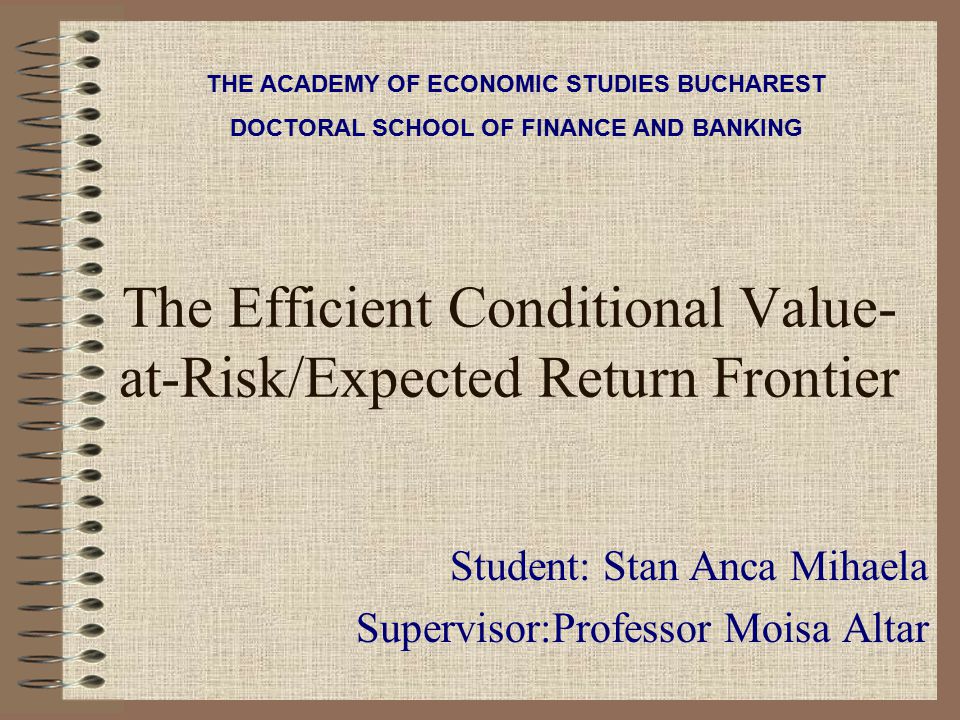Jorion Value At Risk

The 5% Value at Risk of a hypothetical profit-and-loss probability density function Value at risk ( VaR) is a measure of the risk of loss for investments. It estimates how much a set of investments might lose (with a given probability), given normal market conditions, in a set time period such as a day. VaR is typically used by firms and regulators in the financial industry to gauge the amount of assets needed to cover possible losses. For a given portfolio, time horizon, and p, the p VaR can be defined informally as the maximum possible loss during the time if we exclude worse outcomes whose probability is less than p. This assumes pricing, and no trading in the portfolio. For example, if a portfolio of stocks has a one-day 5% VaR of $1 million, that means that there is a 0.05 probability that the portfolio will fall in value by more than $1 million over a one-day period if there is no trading. Download Megaman X6 English Patch there. Informally, a loss of $1 million or more on this portfolio is expected on 1 day out of 20 days (because of 5% probability).
Jagiellonian University Medical College 4 Year And 6 Year Programs. Against Value-at-Risk. The definition I used for the VAR came from the informative book by Philippe Jorion. The risk management objective function is.
A loss which exceeds the VaR threshold is termed a 'VaR breach'. More formally, p VaR is defined such that the probability of a loss greater than VaR is less than or equal to p while the probability of a loss less than VaR is less than or equal to 1− p. For instance, assume someone makes a bet that flipping a coin seven times will not give seven heads. The terms are that he gains $100 if it doesn't happen (with probability 127/128) but loses $12,700 if it does (with probability 1/128).
The 1% VaR is then -100, because the probability that he loses more than that is less than 1% while the probability that he loses less than zero (which is impossible) is less than 99%. VaR has four main uses in:, financial, and computing.
VaR is sometimes used in non-financial applications as well. Important related ideas are,,,, and.
Orange County Value-at-Risk Case Philippe Jorion's Orange County Case: Using Value at Risk to Control Financial Risk Summary The purpose of this case is to explain how a municipality can lose $1.6 billion in financial markets. The case also introduces the concept of 'Value at Risk' (VAR), which is a simple method to express the risk of a portfolio. After the string of recent derivatives disasters, financial institutions, end-users, regulators, and central bankers are now turning to VAR as a method to foster stability in financial markets. The case illustrates how VAR could have been applied to the Orange County portfolio to warn investors of the risks they were incurring.
Comments are closed.